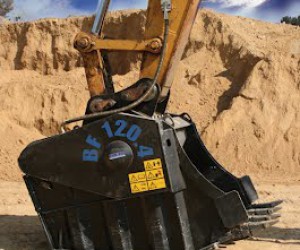According to Claire McMaster, group HR manager for the MSA Group, local companies should focus on employing more women in the mining sector
She stresses that profit margins are higher for mining companies with women on the board, which is consistent with the findings of a study by Catalyst, which found that companies with female board representation also had higher return on sales, higher return on invested capital and higher return on equity. Similarly, a study by the Credit Suisse Research Institute found that companies with women on their boards have a higher return on equity, lower gearing, higher price/book value and better than average growth.
Claire McMaster is also chairperson of “Women in Mining South Africa” a not for profit association representing the women working in the mining industry and offering a collection of tools to support their growth in this industry.
“Mining companies listed on the Johannesburg Stock Exchange had the best level of female board representation, while those listed on the London Stock Exchange had the worst level of representation. University representation in South Africa is also improving at almost 50 percent levels and in some cases more. At the end of Q1 2013 a DMR Report revealed women in mining made up 11 percent of people employed in the industry overall but more work can be done.
McMaster addressing next week’s Joburg Indaba: Investment in Resources and Mining in Africa, says there are challenges women face in the Mining industry. Managing company requirements to create flexible working environments is a challenge that is often easier said than done. “We are currently conducting our own research into this question and are looking for successful and not so successful stories to showcase.” The project also asks Women in the industry what are they doing to take advantage of the initiatives on offer.
Navigating male dominated working cultures is often cited as a barrier to promotion. “Our current research is looking at what lies behind attitudes (fear/Conditioning etc.) and how to tackle this. Women report being excluded from informal networks, which stifles career growth. Developing confidence, self-esteem and assertiveness are required to operate at a more male dominated, senior and decision-making level. A number of our members also bemoan the lack of strong mentors and women in leadership positions, available to them and of course infrastructure and equipment design.”
Deloitte conducted research (Deloitte Insomnia Index) and concluded that women battle with the male dominated culture of the industry and the associated glass ceiling for women in terms of career growth. It also noted that legislation has not always been supportive of women in the industry, for example, when women were not allowed to work underground. The lack of support of women has also contributed to a challenge in retaining female talent as they often move to other industries.
McMasters says women can be effective in changing the industry, especially when they are in leadership positions. “They need to raise awareness of the existing issues, develop their skills sufficiently demonstrate competence, and women need to support each other – be positive role models for younger women coming into the organisation and share their experiences.”
McMasters concludes that mining houses need to accommodate and motivate for more women to take up senior executive positions in mining companies.
“They can then provide stronger career development to women.SA is doing comparably well in this area in comparison to the UK (WIM UK Report) They can also provide professional coaching support and assign women in leadership roles to senior mentors (men or women).”
Lack of technicians causing resourcing crisis
According to Professor Fred Cawood, Head of the Mining Engineering School at Wits University, almost all of the current students are historically disadvantaged at 95 percent with 60 graduates this year and from next year, 100 graduates becoming qualified as mining engineers compared to an annual amount of 30 graduates ten years ago.
“Transformation is not the challenge”, he says, ” nor is creating new Mining Engineers or investment in the upper level graduates, rather the crisis is in the lack of mid to lower level skilled technicians and artisans being created by and for the mining industry.” Cawood says SA needs more technikons and mining schools to produce more graduates with higher certificates and diplomas in mining technical skills.
“The biggest crisis in the gold and platinum mines is pay disputes as a result of the deep and challenging mining conditions but in order to be sustainable these mines need to mechanise for deep mining to go where human workers cannot.”
“Yet they cannot mechanise with the current labour force because they are not skilled enough to operate the complicated and expensive new machines that come with mechanisation. Mines need to strike a pact with labour to reskill their work force to come up to a skilled enough standard to operate a fully mechanised mine.”
Cawood says SA needs more technicians and artisans being trained across the country with at least a mining FET school in every province and a mining school at the technician level at each of the two new universities that are currently planned. “We need to see the same kind of investment we are seeing in the upper level graduates going into the mid and lower levels as currently there are too many ‘chiefs’ and too few ‘indians’ for mechanisation to work sustainably.”
The clock is ticking, Cawood says that if more investment is not put into mid and lower level technical training then mines will become unsustainable and cease to be viable within twenty years’ time.






